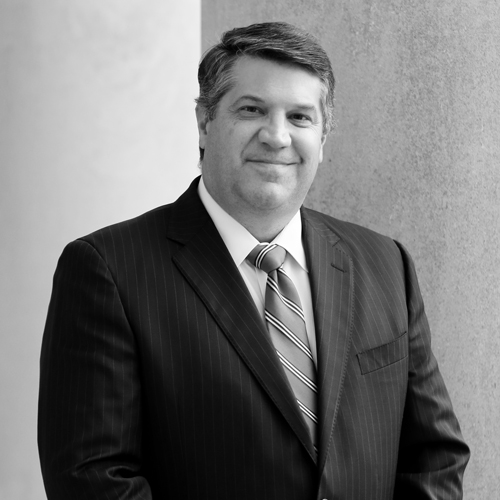
In 1995, the now defunct Midway Airlines announced it would be leaving its hub in Chicago for Raleigh, North Carolina. Scheduled to open by March 2 of that year, the airline had its work cut out. And for Cindy Ballard, a human resources generalist for the company, that meant hiring more than one thousand people in the Raleigh-Durham area—in just ninety days.
“We were hiring everyone from flight attendants and pilots to operations agents and headquarters staff,” Ballard recalls. “And back then, we didn’t have LinkedIn or the internet or any of those resources.”
So, Ballard and the HR team did everything from partnering with the local chamber of commerce to buying radio ads to having an on-site job fair in a hangar at the Raleigh-Durham International Airport. And it worked. By March 2, Midway was fully staffed to operate an airline. There was only one issue. In an ironic twist of fate, Raleigh—where March weather typically brings temperatures in the mid to high fifties—was hit with an unexpected ice storm, something you might see in Chicago in March, but certainly not in North Carolina.
“Let’s just say we didn’t fly on March 2,” Ballard says. “But we flew on March 3, and it went off without a hitch.” That moment proved to be one of many pivotal moments in Ballard’s HR career—a career that would continually be marked by change.
Ballard, however, did not always know she wanted to be a human resources professional. Upon graduating college from Northwood University in Midland, Michigan, she entered the management training program for the department store chain Dillard’s. While there, as a regional manager, Ballard gained experience working with people and managing sales staff. That’s when she also realized how much she enjoyed managing people. She liked developing others by providing developmental feedback and giving performance reviews. She decided to pursue a career in HR, but Dillard’s offered no room for growth. That’s when fate struck.
While on a flight to Chicago, Ballard found herself sitting next to the CEO of Midway Airlines. The two got to talking, and a few months later, he offered Ballard her first human resources job.
“That’s my story,” Ballard says. “You never know who you’re going to meet on a plane.”
Midway Airlines proved to be the perfect training ground for the young HR leader. She gained general experience compensation, payroll, benefits, employee relations, and just about any other task that would fall under HR’s purview. She eventually moved into senior HR positions at Borders Group, where she introduced the company’s first recruitment technology that used an analytic approach to evaluate quality of hire, cost per hire, and time to fill. Then, at Initiative Media, she decreased turnover by about roughly 28 percent, increased productivity by 20 percent, and reduced overhead expenses by roughly 48 percent. And after joining Infotrieve Inc., she decreased employee turnover to less than 5 percent and increased employee satisfaction by 5.2 percent.
But she honed her true leadership skills when she joined 20th Century Fox in 2007 as the company’s vice president of worldwide human resources. In that role, she helped spearhead global human resources initiatives that supported 2,500 employees in thirty-one countries across theatrical, enterprise operations, television distribution, and home entertainment divisions.
When Ballard joined the company, the $3 billion enterprise did not have an international HR capability. So, she built technology-driven HR systems from the ground up—including performance management, payroll, benefits, compensation, compliance, and timekeeping—transforming thirty-one disparate operating processes into one streamlined process and system.
“I got to turn a very, quite frankly, not progressive HR foundation into a really in-depth, well-run HR function internationally,” she says. “It was really an exciting time for me.”
Additionally, being that her first role focused on international HR, Ballard learned to work across borders and learn diversity and inclusion from a global perspective.
“Diversity and inclusion for me is about having a mutually respectful culture and making sure that someone belongs and feels comfortable conveying their point of view,” Ballard says. “We are making sure that we are very inclusive in everything we do and making sure that we’re checking our biases at the door. A key component of that is to understand, appreciate, and be able to flex to somebody else’s culture.”
While building out HR functions internationally was an invaluable experience, her time there was also marked by a seismic shift in the entertainment industry. During Ballard’s tenure at the company, the entertainment industry started shifting away from physical movie and TV sales (in the form of DVDs and Blu-ray) and toward streaming services. As with any major change, there were growing pains among the employees. Ballard, however, was ready to take on the challenge.
“I don’t mind change,” she says. “I actually thrive in change. It gets me energized.”
These changes caused needed transitions in the skill sets required by staff to succeed. Ballard, however, was equipped to train existing staff and recruit new talent where needed. During that time, she developed the idea of change evolution.
In the past, Ballard says change management was something viewed as an asset that companies temporarily needed to guide them through periods of transformation. Ballard, however, realized that wouldn’t work for the modern workforce.
“I think we’ve gone from the likes of change management to a change revolution to a change evolution,” she says. “The reality is that there is change in every industry, in every position, in every company right now. It’s an evolution because it’s going to continue to evolve by the second, by the minute, by the hour, by the day. Change management now needs to be a foundation of an HR function.”
In 2015, with that concept of change evolution in mind, Ballard took on an industry facing some of the greatest challenges in recent history: print journalism. As the chief human resources officer of Tronc., which publishes the Chicago Tribune and local newspapers throughout the United States, Ballard built an HR function that was agile enough to respond to the business’ ever-changing strategic agenda. It was a challenging time for the company, as Tronc had just created the spin-off Tribune Media, which meant Ballard had to rebuild and refocus the HR function. Additionally, the company was marred with constant change in leadership. Still, Ballard succeeded and thrived in that change, even when it came to onboarding a new executive team in line with the new CEO’s vision for the company. And her success in those realms did not go unnoticed.
“Cindy is a wonderful business partner who I feel lucky to now call a close friend,” says Nick Gialamas of HUB International. “She is an inspirational leader and role model to those around her.”
In fact, while facing the massive challenge of shifting the organization from a print mind-set to a digital mind-set, Tronc CEO Justin Dearborn nominated Ballard for Committee of the Los Angeles Chapter of the National Human Resources Association’s Human Resources Executive of the Year. In his nomination, he praised Ballard for her leadership and HR initiatives, such as launching a flexible time policy. Above all, though, he cited her ability to adapt and thrive in change.
“Cindy is a fearless leader, which is one of her strongest attributes as we operate in a highly disrupted, rapidly changing business environment,” Dearborn wrote. “Cindy provides a stabilizing influence during periods of change.”
Now after thriving at her first CHRO role at a public company, Ballard is looking for opportunities that will further expand her skill set, yet also allow her to focus on what she’s loved since she decided HR was the career path for her. It doesn’t matter if that’s for an airline, an acclaimed entertainment company, or for a major media corporation.
At the end of the day, her focus always remains the same: deliver impactful human resource capabilities that drive profitable organizational results while leading and developing people.
Photo: Kevin Bonny Photography

